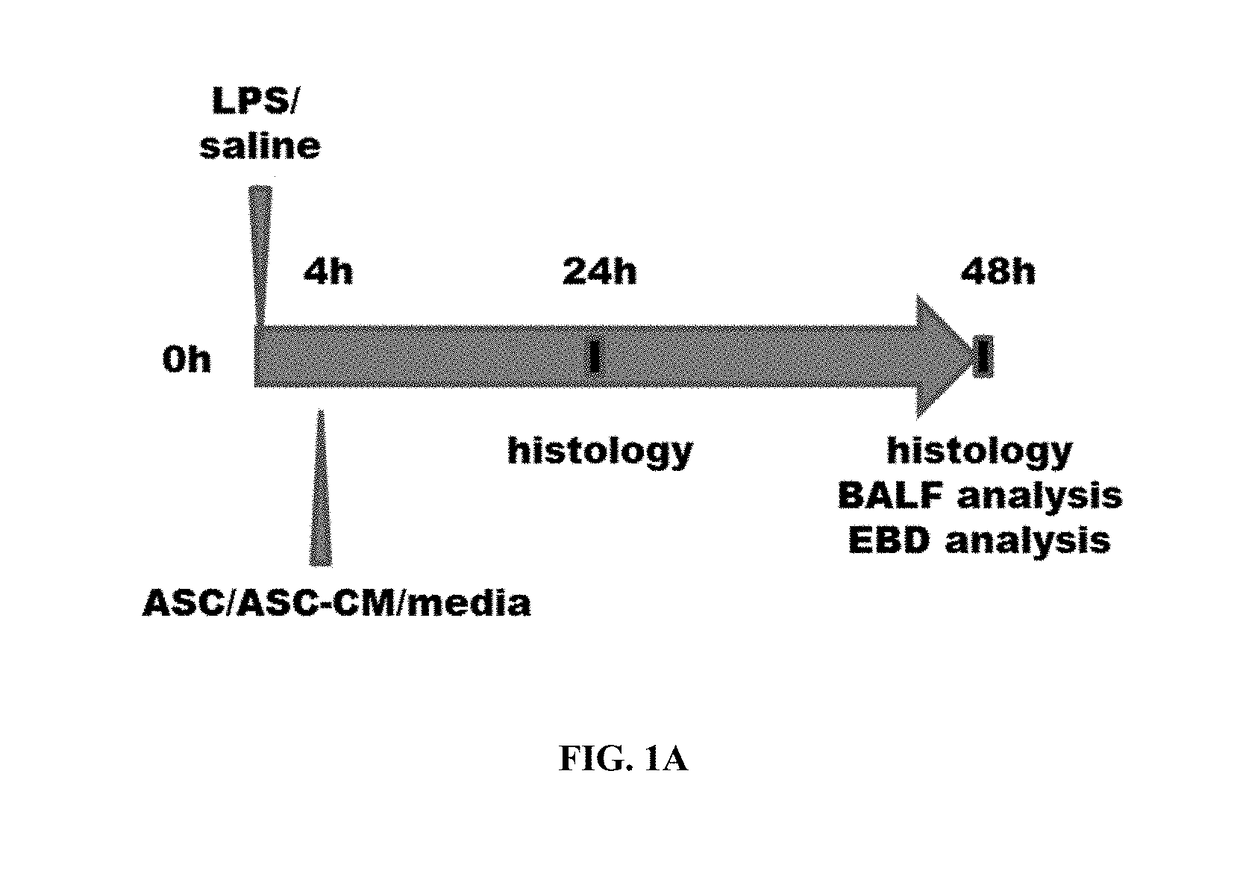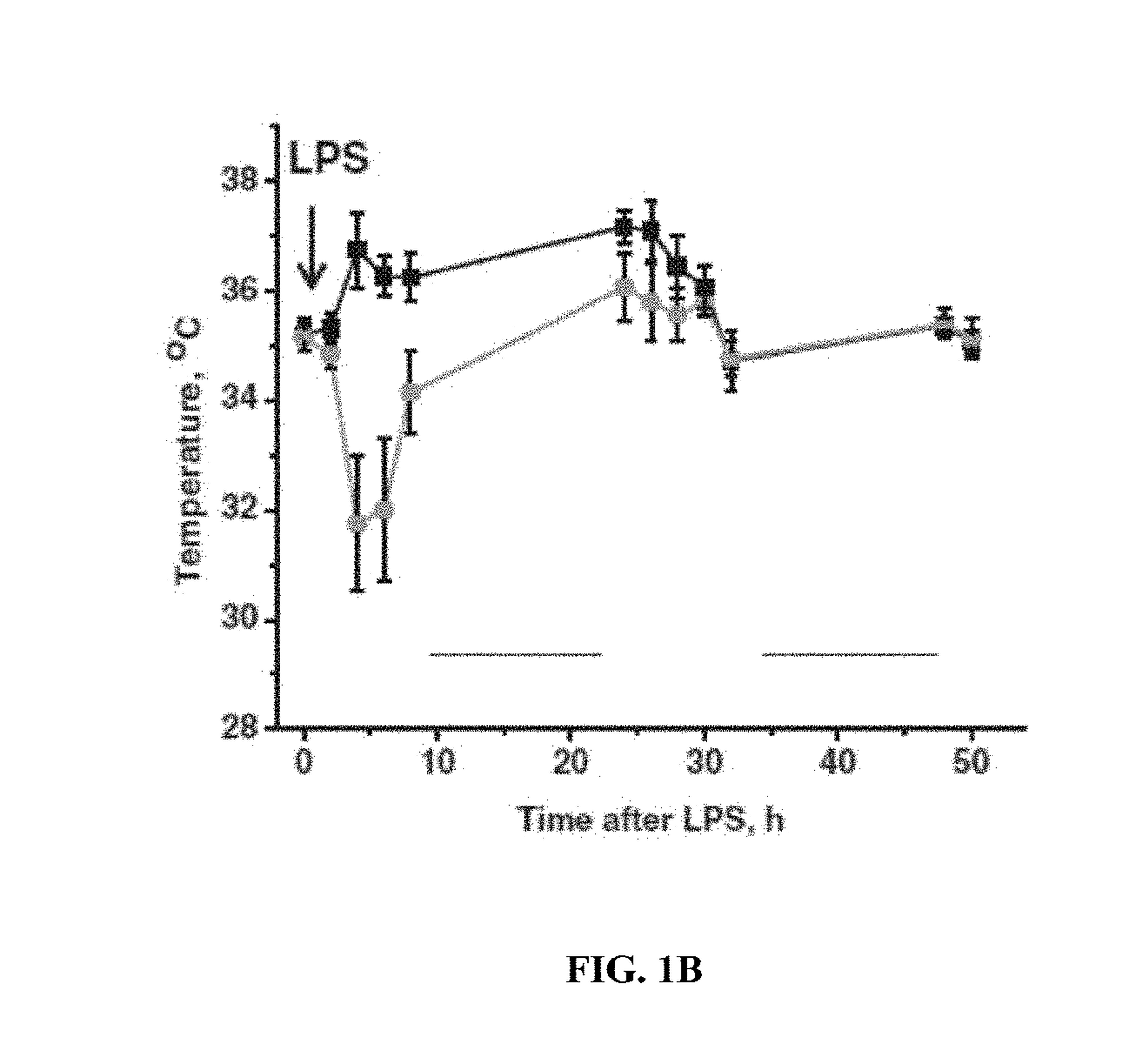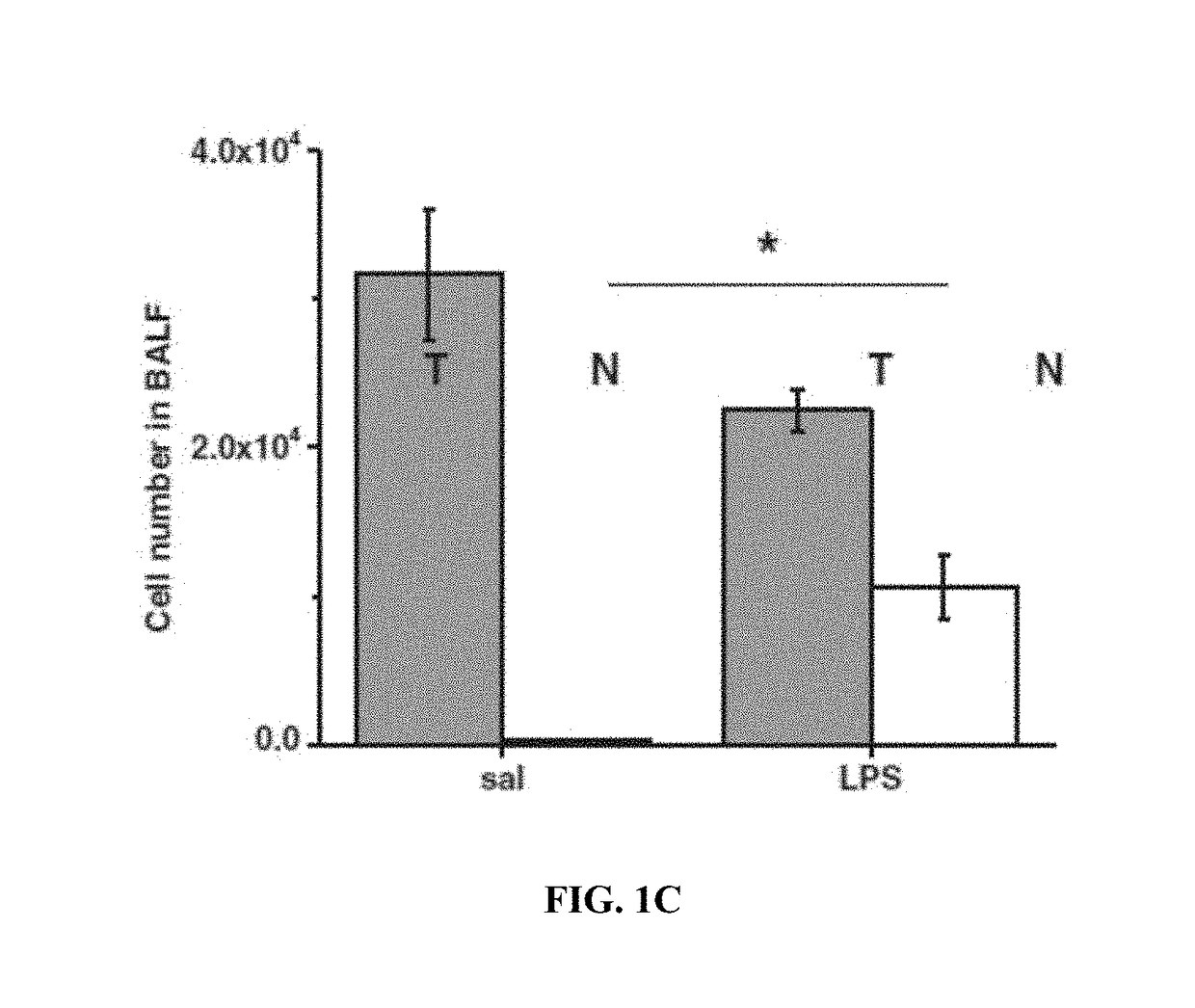Use of ASC and ASC-CM to treat ARDS, SARS, and MERS
a technology of sars and mers, which is applied in the field of use of asc and asc-cm to treat ards, sars, and mers, can solve the problems of reducing the ability of lavage neutrophils to generate reactive oxygen species, affecting the viability of epithelial cells, and reducing the ability of endothelial and epithelial barrier, so as to suppress the histopathologic changes of the lung. , the effect o
- Summary
- Abstract
- Description
- Claims
- Application Information
AI Technical Summary
Benefits of technology
Problems solved by technology
Method used
Image
Examples
Embodiment Construction
[0082]For the purposes of promoting an understanding of the principles of the novel technology, reference will now be made to the preferred embodiments thereof, and specific language will be used to describe the same. It will nevertheless be understood that no limitation of the scope of the novel technology is thereby intended, such alterations, modifications, and further applications of the principles of the novel technology being contemplated as would normally occur to one skilled in the art to which the novel technology relates are within the scope of this disclosure and the claims.
[0083]As used herein, unless explicitly stated otherwise or clearly implied otherwise the term ‘about’ refers to a range of values plus or minus 10 percent, e.g. about 1.0 encompasses values from 0.9 to 1.1.
[0084]As used herein, unless explicitly stated otherwise or clearly implied otherwise the terms ‘therapeutically effective dose,’‘therapeutically effective amounts,’ and the like, refers to a portio...
PUM
 Login to View More
Login to View More Abstract
Description
Claims
Application Information
 Login to View More
Login to View More - R&D
- Intellectual Property
- Life Sciences
- Materials
- Tech Scout
- Unparalleled Data Quality
- Higher Quality Content
- 60% Fewer Hallucinations
Browse by: Latest US Patents, China's latest patents, Technical Efficacy Thesaurus, Application Domain, Technology Topic, Popular Technical Reports.
© 2025 PatSnap. All rights reserved.Legal|Privacy policy|Modern Slavery Act Transparency Statement|Sitemap|About US| Contact US: help@patsnap.com



